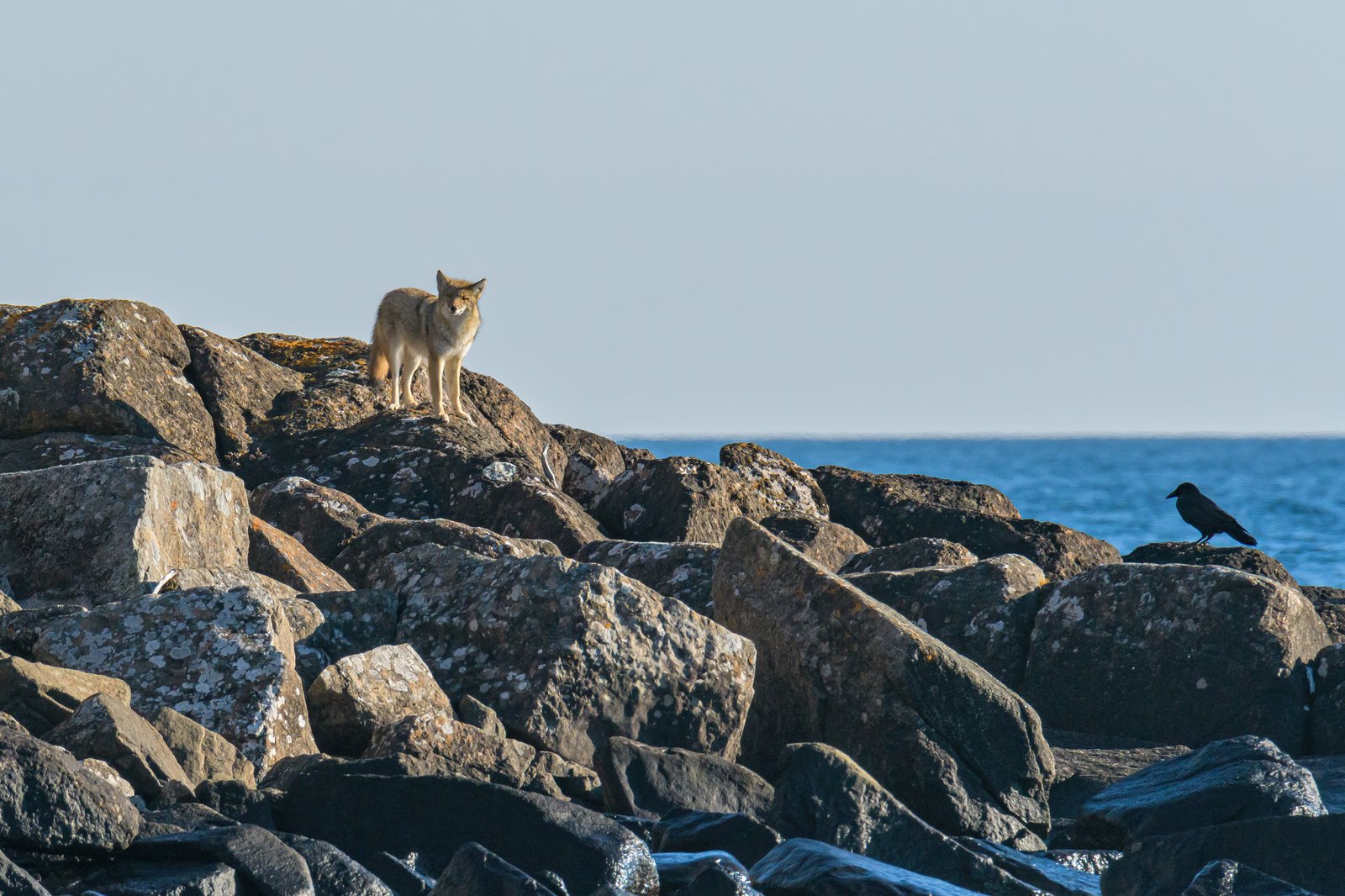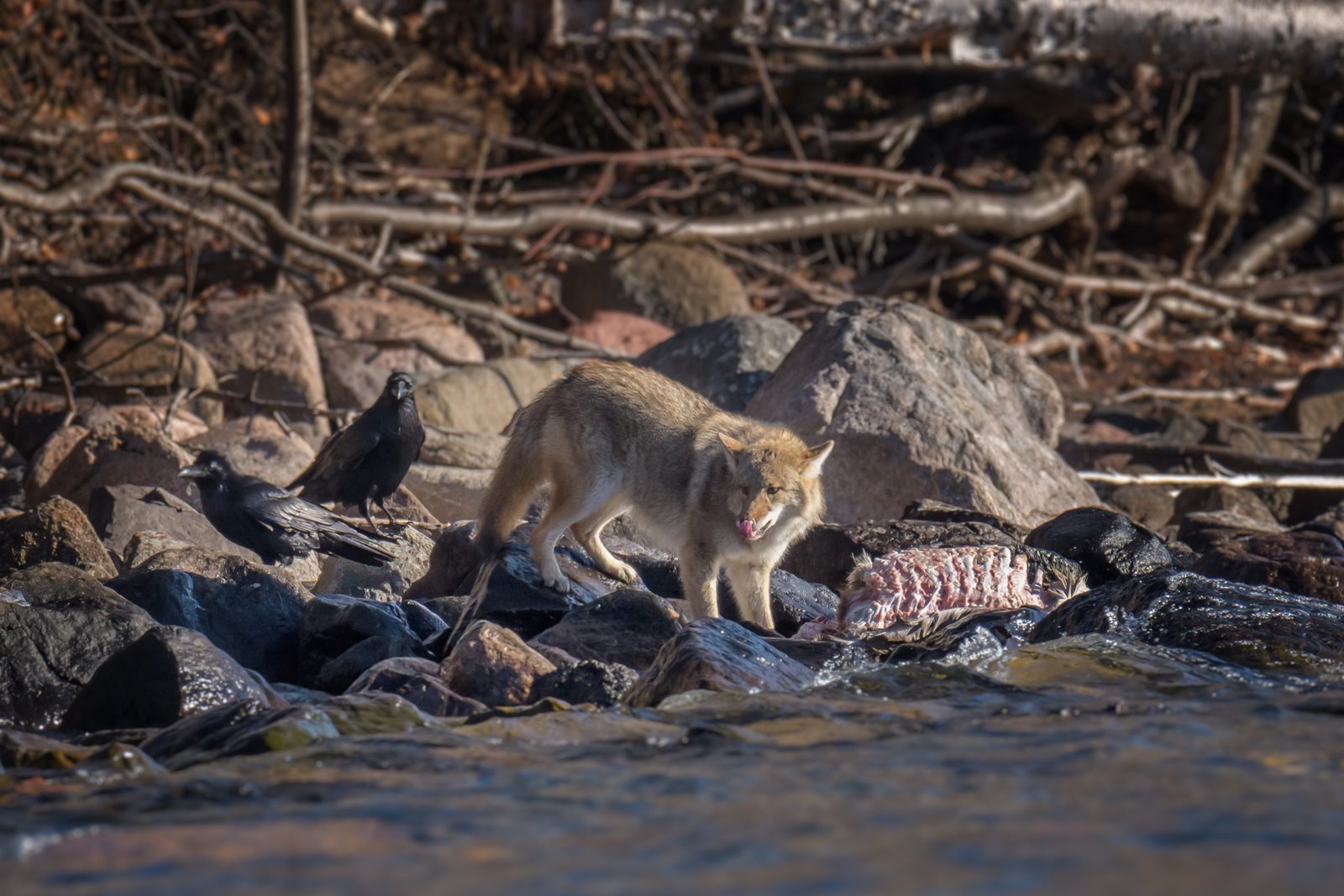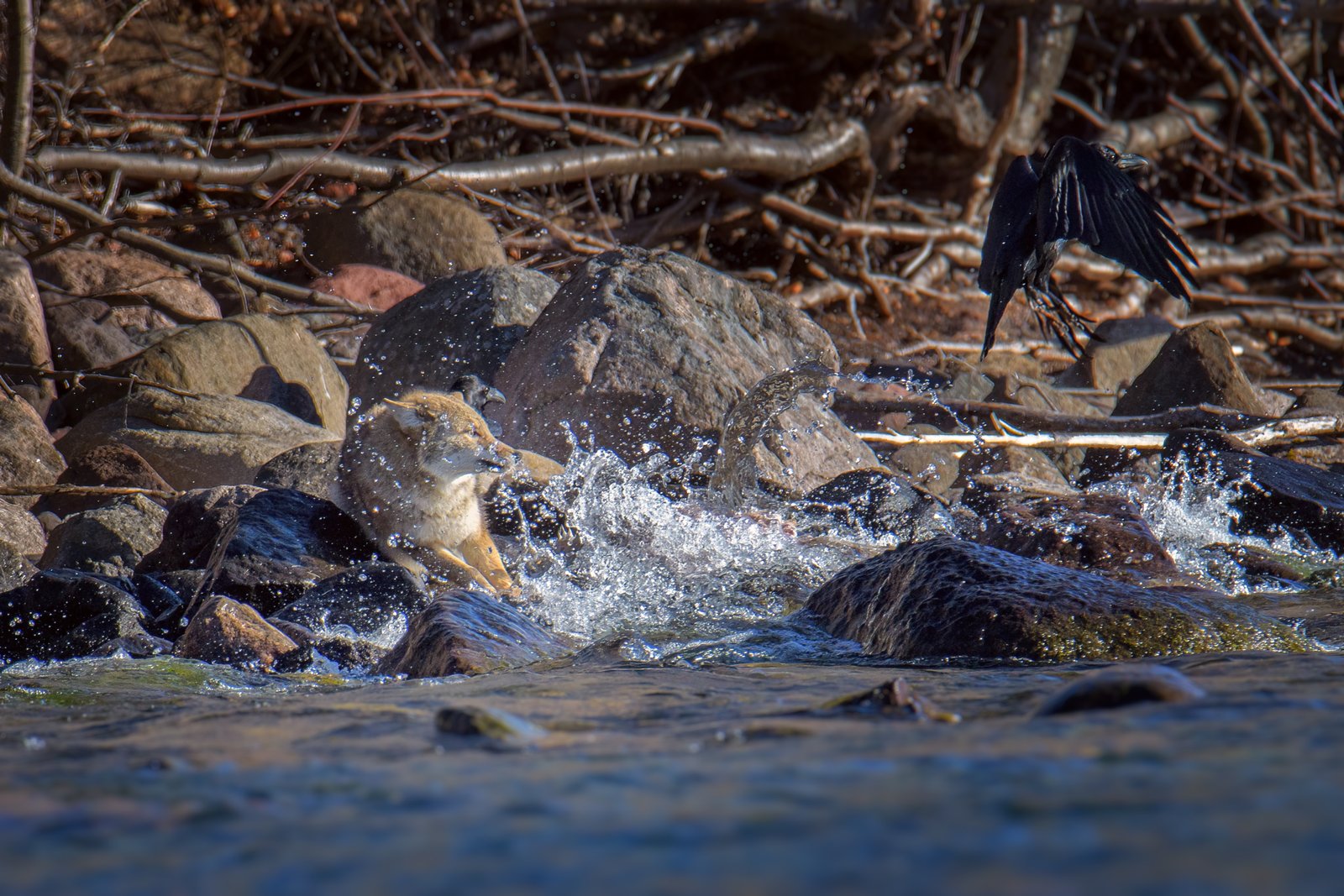
The coyote-raven relationship is an example of loose symbiosis. If one has found food, it’s not long before the other has joined in. Coyotes will often follow ravens to carrion, and in turn, ravens have been known to lead coyotes to carcasses too big for them to rip apart. At the carcass, the ravens will often perch nearby and warn the coyote of any danger or other intrusions. The coyote is usually occupied tugging at the carcass but will heed any warnings from ravens.
I personally witnessed this relationship on a cold, windy day in November while overlooking the rocky shoreline of Lake Superior. I noticed two ravens and a crow perched in some trees across the bay. As I watched, a curious coyote appeared on one of the large boulders along the water’s edge. It had heard the ravens calling and came to investigate. There, beneath the roosting ravens, a deer carcass was wedged between the rocks, likely washed there by the large waves from a storm the previous day. The coyote attempted to drag the carcass out of the water, but the weight of the carcass and the large boulders made the task impossible.

Undeterred, the coyote began to feast on the carcass as best it could, dodging the incoming waves as it tugged at the deer’s flesh. The ravens came down from the trees and perched on the rocks nearby, watching the coyote intently. They vocalized while hopping from rock to rock, seeming to encourage the coyote to drag the carcass away from the water, making it easier for them to scavenge. At times, they were face to face, and I wondered if they were communicating with each other.


An interesting study published in the journal Behavioral Ecology and Sociobiology in 2009 aimed to investigate the communication between coyotes and ravens during scavenging events. The researchers found that coyotes and ravens used vocalizations to communicate with each other during scavenging events. They observed that coyotes would emit a long-distance howl to attract the attention of nearby ravens. Once the ravens arrived, they would emit specific calls that indicated the presence and location of food. The coyotes then followed the calls to locate the food source.
The researchers also found that the ravens’ calls varied depending on the type of food available. For example, they used a different call for a small carcass, like a rodent, than for a larger one, like a deer. The coyotes seemed to understand the meaning of the calls and were able to locate the food accordingly.

Although the distance between us and the noise of the waves prevented me from hearing any vocalizations, it was obvious that there was a mutualistic relationship between the coyote and ravens. In this instance, the waves and boulders prevented them from getting a shared meal, but their interaction provided a fascinating look into the complex and fascinating interactions between different animal species in the natural world. Coyotes provide a food source for ravens, and in return, ravens help coyotes locate food and also serve as an early warning system for potential predators.